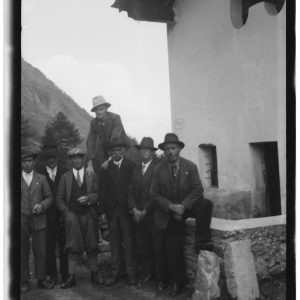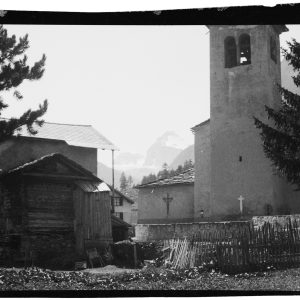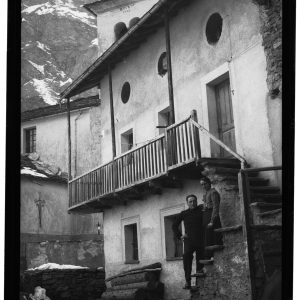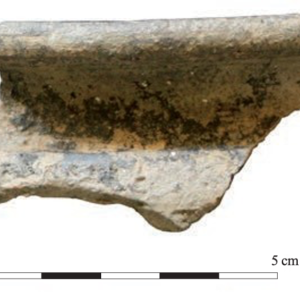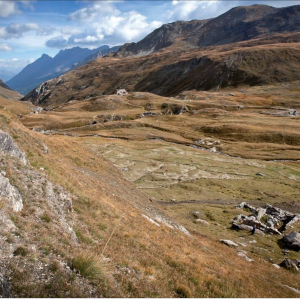churches
The church of Bruil, known today as Notre Dame de la Visitation,It possesses a rich and intricate history, rooted in the religious and community traditions of the Rhêmes Valley. Originally, until 1650, the territory of Rhêmes-Notre-Dame was part of the parish of Saint-Georges. Historical documents attest to the existence of a chapel as early as the first half of the 15th century in the locality of Luedum, now known as Bruil.
This primitive chapel was likely rebuilt and consecrated on June 2, 1495, by the Bishop of Aosta, who the following year also authorized the celebration of baptisms and burials there. On June 1, 1650, the church of Bruil was elevated to a parish and took on the name Rhêmes-Notre-Dame.
Architecturally, the church has a Latin cross plan with a central nave. Two arches projected at the level of the transept house the side altars, while the sanctuary is slightly raised. The bell tower, with a single order of bifores in the bell chamber, was rebuilt along with the church in 1680.
The name and dedication of the church have changed several times throughout history: originally dedicated to the Conception of the Blessed Virgin Mary, it was placed under the protection of the Assumption of Mary in 1715, and in 1810 it was dedicated to the Visitation of the Virgin.
In 1839, due to its insufficient size, the church was raised and expanded towards the parish house. In 1864, it was entirely decorated by the painter Stornone from Ivrea. Further restoration work was carried out in 1896, when the Artari brothers renewed much of the existing decorations, leaving in the sanctuary only the two paintings depicting the sacrifice of Abraham and Melchizedek.
The main altar, made of polychrome marbles, features a tabernacle and an overlying throne for the exposition of the Eucharist. The side arches are decorated with painted and gilded wood, adding an additional touch of elegance and sacredness to this historic and artistic place of worship.
The chapels scattered throughout Rhêmes-Notre-Dame Valley are small jewels of architecture and faith, each with its own unique history:
Cappella di Carré (Sant'Anna):
This chapel was originally built in 1620 by Giovanni and Bernardino Benoit, who also endowed it with a fund through an act dated July 2, 1621. Initially closed towards the façade with a simple wooden gate, it was completely rebuilt in 1864 and subsequently blessed on October 2, 1865, by the parish priest of Saint-Georges, Therisod.
Chapel of Pellaud
(Saints Sebastian, Fabian, and Roch):
Built between 1645 and 1649 on the left bank of the stream, this chapel received its endowment through a notarial deed on January 20, 1649, drafted by Bartolomeo Pariset. Destroyed by a flood in 1868, it was rebuilt on the other side of the stream the following year and was blessed in October 1869. Today, it stands beautifully restored next to the village of the same name.
Chapel of Fos
(Saint James the Greater):
Founded on June 21, 1707, by Giovanni Giorgio Centoz and Giovanni Leonardo Desfours, and attested by a deed of notary Perrinod, this chapel reflects the deep sense of community and devotion of the area.
Chapel of Barmaverain
(Saints Pantaleon, Sebastian, and Roch):
The local community, documented by a deed on September 23, 1644, by the notary Giacomo Arnod, was responsible for the foundation of this chapel. Today, unfortunately, only a ruin remains, a silent witness to the once fervent faith of the hamlet's past.
Each of these chapels tells a story of community, devastation, and renewal, keeping alive the spiritual and cultural traditions of Rhêmes-Notre-Dame Valley.
Wooden statue of Madonna with Child from the chapel of Barmaverain
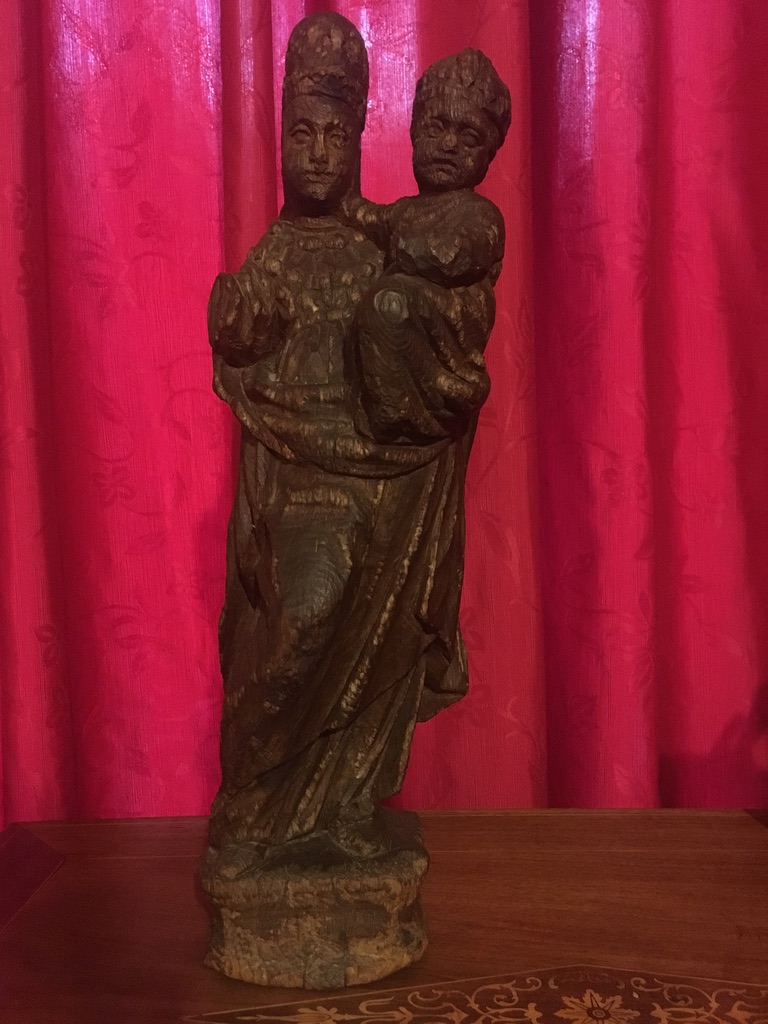
The lime kiln and the Mystery of the Dzé Alpine Pasture: A Historical Enigma at High Altitude
In the isolated and majestic context of the Valdostan Alps, the Dzé Alpine pasture stands out as a historical enigma, surrounded by mysteries that make it a fascinating place for history enthusiasts as well as hikers. Located between the Fond and Les Soches alpine pastures, Dzé sits along the ancient road connecting the two Alps, positioned at 2287 meters above sea level. This location raises questions about its historical functionality and the original purpose of its constructions.
Architecture and Mysterious Structures
Among the ruins dotting the area, there stands out a structure with an apse and a crypt. This construction, featuring typical characteristics of religious buildings, has never been mentioned in the official documents of the time, which adds to the aura of mystery surrounding it.
Adjacent to this structure is a rectangular building with remains of two central circular stone pillars. These architectural elements suggest a historical and cultural significance possibly greater than that of a simple mountain pasture.
The Lime Kiln
An Unusual Feature Another peculiar aspect of Dzé is the presence of a lime kiln, an ancient oven used for preparing lime. Its existence in a primarily agricultural context raises questions about its original function, especially considering the altitude and therefore the absence of the necessary wood material to fuel the kiln.
Historical Testimonies and Speculations
Charles Passerin d'Entrèves, writing in the magazine "Le Flambeau" in 1950, describes the remains of an ancient structure in Dzé as much more imposing and solid than a simple cattle barn. The walls, nearly a meter thick and built with well-cut stones, suggest remarkable antiquity and could indicate that the ruins were part of a travelers' hostel or another building of significant historical importance. The area has also received recent attention, with archaeological discoveries including fragments of Roman pottery. These findings, combined with Dzé's strategic location along an ancient trade route, suggest a site of significant historical and cultural importance. Always in 'Le Flambeau', issue number In the winter 2010 issue of "Le Flambeau," Dzé is described in detail, with abundant particulars, photos, and surveys, by the Valdostan historian Joseph-César Perrin. Here he hypothesizes the existence of an ancient and unknown religious chapel.
Conclusions and Future Perspectives
The Dzé Alpine pasture remains a site full of mystery, with many questions still unanswered. Its history, architecture, and archaeological discoveries invite further research to unveil the secrets of this fascinating and isolated place. For historians, archaeologists, and Alpine enthusiasts, Dzé provides an invaluable opportunity for reflection on the human and natural history of this remote Alpine region.
Copyright 2023 LesReguges.it
